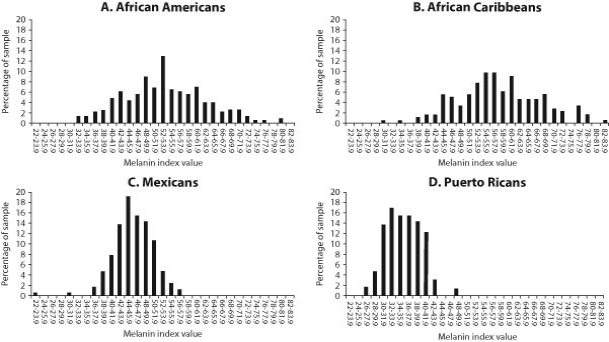Multiple Choice
 Source: Parra, E. J., Kittles, R. A., & Shriver, M. D. (2004) . Implications of correlations between skin color and genetic ancestry for biomedical research. Nature Genetics, 36, S54-S60.
Source: Parra, E. J., Kittles, R. A., & Shriver, M. D. (2004) . Implications of correlations between skin color and genetic ancestry for biomedical research. Nature Genetics, 36, S54-S60.
-The graphs shown indicate the range of melanin amounts in populations from four different geographic regions. Of these populations, population D is likely most adapted for
A) having enough vitamin D to produce strong bones.
B) being protected against skin cancer.
C) preventing the breakdown of folate (folic acid) .
D) having very active melanin-producing cells.
Correct Answer:

Verified
Correct Answer:
Verified
Q25: Complete the analogy: _ are to vertebrate
Q26: Based on Acanthostega fossils, scientists now believe
Q27: Of all of the chordate groups, why
Q28: Which extinct hominin first appeared about 1.9
Q29: Which adaptations allowed reptiles to complete their
Q31: Which would a shark not be able
Q32: <img src="https://d2lvgg3v3hfg70.cloudfront.net/TB6039/.jpg" alt=" -The main difference
Q33: Hominin fossil footprints that are obviously bipedal
Q34: <img src="https://d2lvgg3v3hfg70.cloudfront.net/TB6039/.jpg" alt=" -According
Q35: Which is characteristic of all vertebrates?<br>A) a